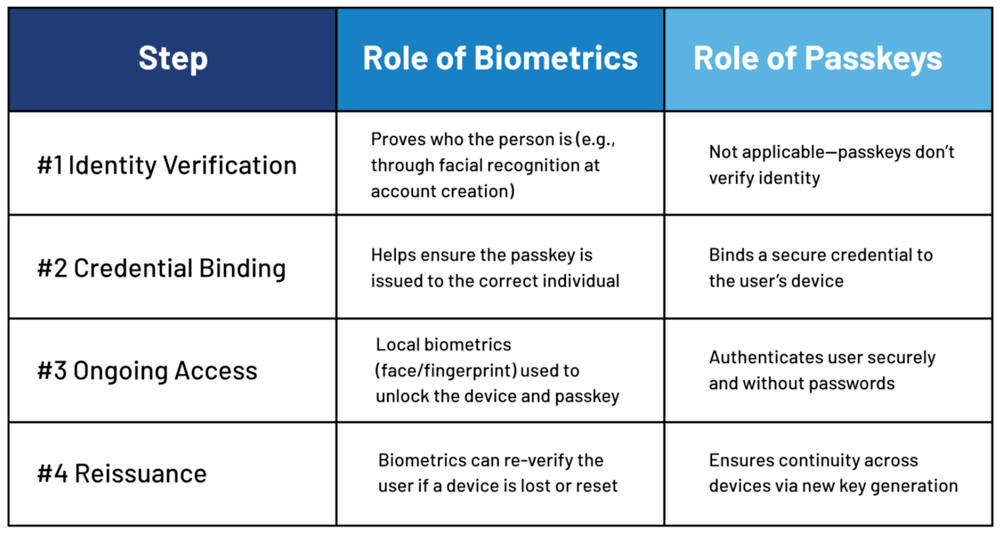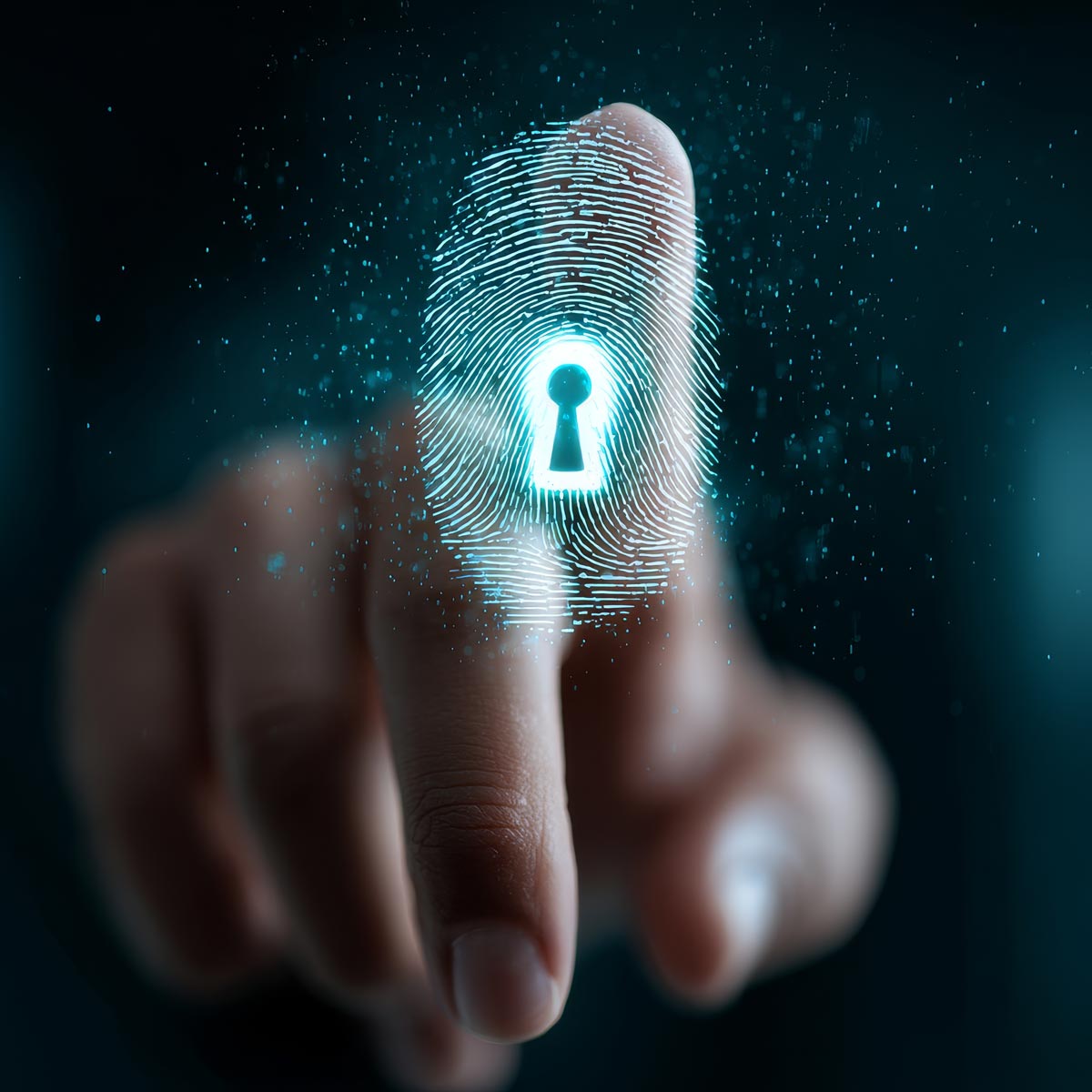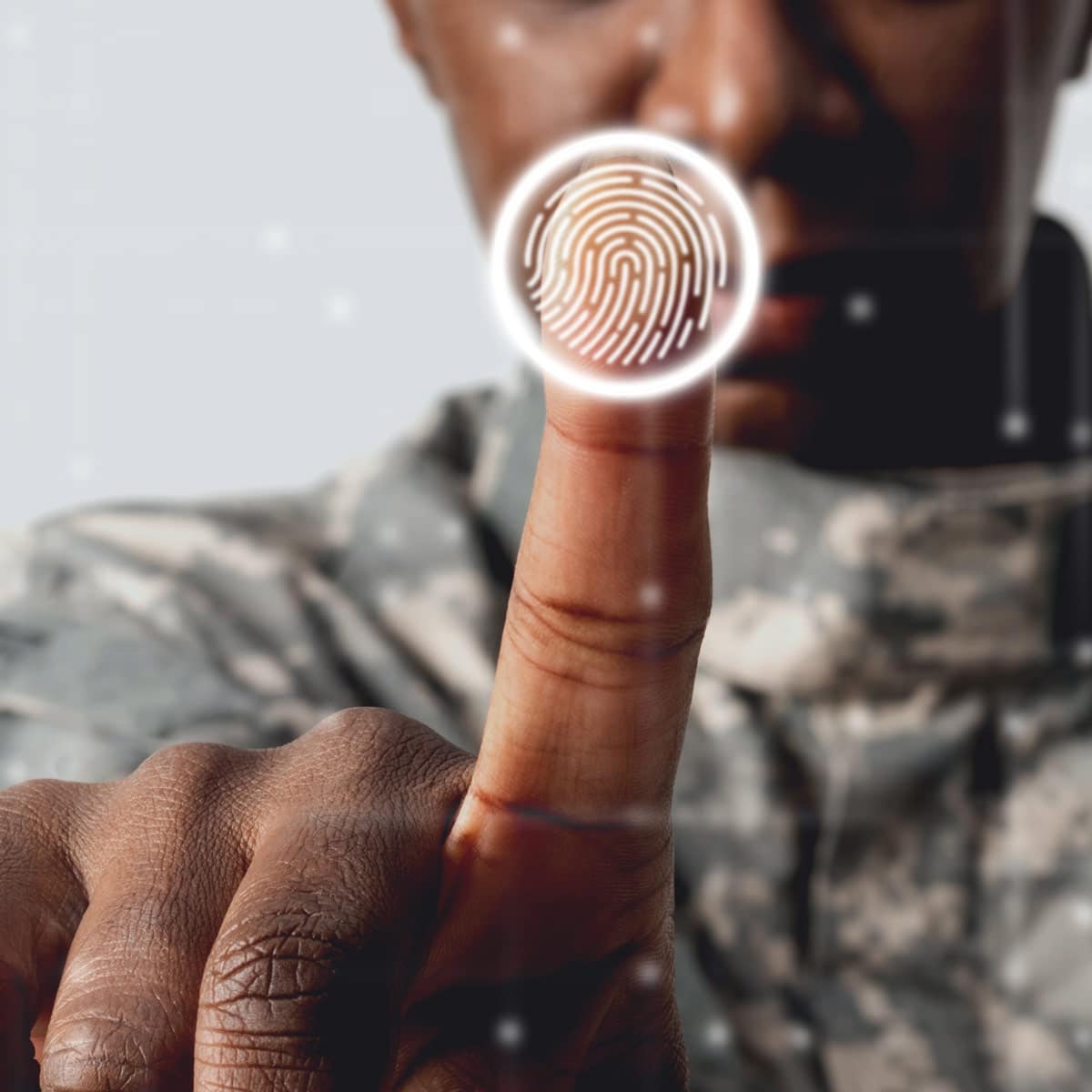Cyberattacks, credential theft, and phishing scams have made traditional authentication methods both risky and costly. The good news? A more secure, user-friendly alternative is gaining traction—passkeys and biometric authentication. Together, they’re reshaping how we think about digital identity and access control.
This blog is your guide to understanding what these technologies are, why they matter, and how they work best together to protect your business, your employees, and your customers.
Understanding Passkeys: A Simpler, More Secure Future
What is a passkey?
A passkey is a digital credential that replaces traditional passwords. It uses cryptographic key pairs—one stored on the user’s device (private key) and one held by the service provider (public key). During login, the device signs a challenge using the private key, proving the user’s identity without ever transmitting the key itself.
Passkeys are built on the FIDO (Fast IDentity Online) standard, which is widely supported by Apple, Google, Microsoft, and others.
Why it matters:
- Phishing-Resistant: Unlike passwords or one-time codes, passkeys can’t be intercepted or reused.
- Streamlined UX: Users authenticate with a fingerprint, facial recognition, or device PIN.
- No Memory Required: No passwords to remember—or forget.
- Lower Support Costs: Less time and money spent on password resets.
Real-world momentum:
Tech giants are embracing passkeys. Facebook and WhatsApp recently rolled them out across their platforms. Microsoft is phasing out password storage in its Authenticator app and encouraging users to rely solely on passkeys. These shifts are happening now, and they’re massive.
The Hidden Risk: Passkeys Don’t Verify Who You Are
While passkeys offer secure, user-friendly access, they have a critical limitation: they don’t inherently verify a person’s identity—only that the person has access to the device.
As Ajay Amlani, CEO of Aware, puts it:
“If you start with just a username and password, you may be binding a strong credential to a weak identity. That’s where remote biometrics can play a valuable role, especially upfront.”
This matters enormously in scenarios like:
- Customer onboarding
- Employee provisioning
- Account recovery or reissuance
Without strong identity proofing at the start of the relationship, passkeys risk becoming a high-tech lock handed to the wrong person.
Biometrics: The Foundation of Modern Identity
What are biometrics?
Biometric authentication uses physical or behavioral characteristics—such as face, fingerprint, voice, or iris patterns—to verify a person’s identity. It’s used both for identity proofing (Who is this person?) and for authentication (Is this the same person as before?).
Modern biometric systems are backed by innovations in liveness detection and anti-spoofing, which help detect and block fraud attempts using photos, deepfakes, or masks.
Key benefits for business:
- Identity assurance: Know who is behind the device or application.
- Portability: Biometrics follow the user across devices and sessions.
- Recovery support: Users can re-authenticate biometrically when recovering accounts or moving to new devices.
- Fraud reduction: Biometrics add a powerful barrier to identity-based attacks.
Why the Combination Works: Biometrics + Passkeys
Some leaders may think of biometrics and passkeys as two competing technologies—but the truth is, they work best in tandem.
Here’s how:

Amlani summarizes it well:
“Passkeys and biometrics aren’t competing—they’re complementary. Passkeys offer secure, phishing-resistant access, while biometrics ensure we know who’s on the other side.”
What This Means for Consumers
You’ll likely start noticing new options when you log in to your favorite websites or apps—like “Use Face ID,” “Sign in with passkey,” or “Log in with fingerprint.” These changes aren’t just for tech-savvy users—they’re meant to help everyone have a safer and easier experience online.
Here’s how this shift benefits you:
- Security: Passkeys and biometrics make it much harder for hackers to break into your accounts. Since there’s no password to steal or guess, common threats like phishing emails and password leaks become far less dangerous.
- Convenience: No more typing (and remembering) long, complicated passwords or searching for that sticky note where you wrote one down. You can log in almost instantly—usually with just your face or fingerprint.
- Identity Protection: Your biometric info is unique to you. That makes it one of the strongest ways to confirm your identity and prevent someone else from pretending to be you—even if they’ve stolen your device.
What This Means for Business Leaders
Business leaders are under pressure to balance security, customer experience, and operational efficiency. The combination of biometrics and passkeys addresses all three:
- Security: Protect against phishing, impersonation, and credential stuffing.
- User Experience: Make authentication faster and more intuitive for employees and customers.
- Scalability: Support secure onboarding and authentication across millions of users.
- Compliance & Trust: Help meet regulatory expectations while building user confidence.
Common Use Cases:
- Financial institutions verifying new customers remotely
- Healthcare systems authenticating providers or patients
- Enterprises securing hybrid workforces
Identity is the New Perimeter
In today’s environment of cloud apps, remote work, and digital commerce, identity is the new security perimeter. And securing that identity starts at the moment of account creation—not just at login.
Biometrics and passkeys represent the best of modern authentication. Together, they offer a smarter, stronger way to protect your people, platforms, and reputation.
Don’t choose one. Choose both.



